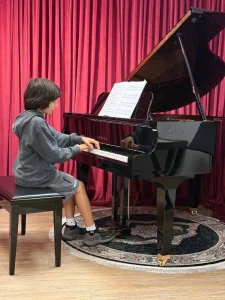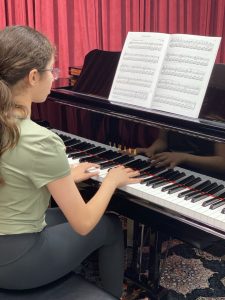10 Common Mistakes Beginner Pianists Make (and How to Fix Them)
Starting your piano journey is exciting, but many beginners fall into habits that slow their progress. From poor posture to ignoring finger technique, these mistakes can make learning harder than it should be. In this article, we’ll explore the 10 most common mistakes beginner pianists make and share practical tips to fix them—so you can build strong habits from the start.
1. Ignoring Proper Posture and Hand Position
Mistake: Slouching, tensed wrists, or misaligned elbows can lead to strain.
Fix:
- Sit with your back straight, shoulders relaxed, elbows at keyboard height.
- Curve your fingers naturally.
- Practice in front of a mirror or record yourself.
2. Skipping Warm-Ups Before Practice
Mistake: Jumping straight into songs without warming up.
Fix:
- 5–10 minutes of finger exercises or scales.
- Start slow, focus on accuracy.
- Example exercises: Hanon, Czerny, Scales.
3. Overlooking Finger Independence Exercises
Mistake: Overusing dominant fingers, weak hand coordination.
Fix:
- Practice exercises targeting weaker fingers.
- Hands-separate practice recommended.
4. Practicing Without a Metronome
Mistake: Inconsistent rhythm.
Fix:
- Use a metronome, start slow.
- Gradually increase speed.
- Break difficult passages into smaller sections.
5. Playing Too Fast Too Soon
Mistake: Rushing through pieces.
Fix:
- Focus on accuracy first.
- Increase tempo gradually after mastering the section.
6. Not Reading Sheet Music Correctly
Mistake: Relying only on memory or ear.
Fix:
- Learn staff notation, rhythms, and key signatures.
- Apps and beginner theory books help improve sight-reading.
7. Forgetting to Use Dynamics and Expression
Mistake: Playing notes at the same volume.
Fix:
- Follow dynamics: p, f, crescendo, decrescendo.
- Record yourself to evaluate expressiveness.
8. Avoiding Hands-Separate Practice
Mistake: Practicing hands together immediately.
Fix:
- Practice each hand separately first.
- Combine hands gradually.
9. Neglecting the Left Hand
Mistake: Over-relying on the right hand.
Fix:
- Extra time for left-hand scales and melodies.
- Build LH independence before hands-together practice.
10. Inconsistent Practice Schedule
Mistake: Irregular practice slows progress.
Fix:
- Short daily sessions (15–30 min) are better than infrequent long sessions.
Consistency often comes with structured guidance. If you want a clear practice routine and expert feedback, our Piano Lessons in North Vancouver can help you stay on track.
How to Fix These Mistakes: Quick Recap
| Mistake | Solution |
| Poor posture | Correct sitting, curved fingers, relaxed shoulders |
| No warm-up | Scales or finger exercises 5–10 min |
| Weak finger independence | Hands-separate exercises, target weak fingers |
| No metronome | Start slow, increase gradually |
| Playing too fast | Accuracy first, tempo later |
| Not reading sheet music | Learn notation, use apps/books |
| No dynamics | Apply volume variations, record yourself |
| Avoiding hands-separate | Practice LH & RH individually |
| Neglecting left hand | Dedicate time for LH practice |
| Inconsistent schedule | Short, daily routine |
With these fixes, beginner pianists—whether kids, teens, or adults—can correct common pitfalls and build a solid, expressive foundation.
FAQ
Q1: How long should beginners practice each day?
- 15–20 min daily consistently is more effective than long, irregular sessions.
Q2: Can beginners learn by ear instead of reading sheet music?
- Ear learning is fun, but reading music develops essential skills.
Q3: Should I always use a metronome?
- Yes, until you internalize a steady beat.
Q4: How can I improve my left-hand technique?
- Practice scales and pieces with the LH separately.
Q5: When can I increase practice tempo?
- Only when a passage can be played 5-10 times correctly at the current speed.





